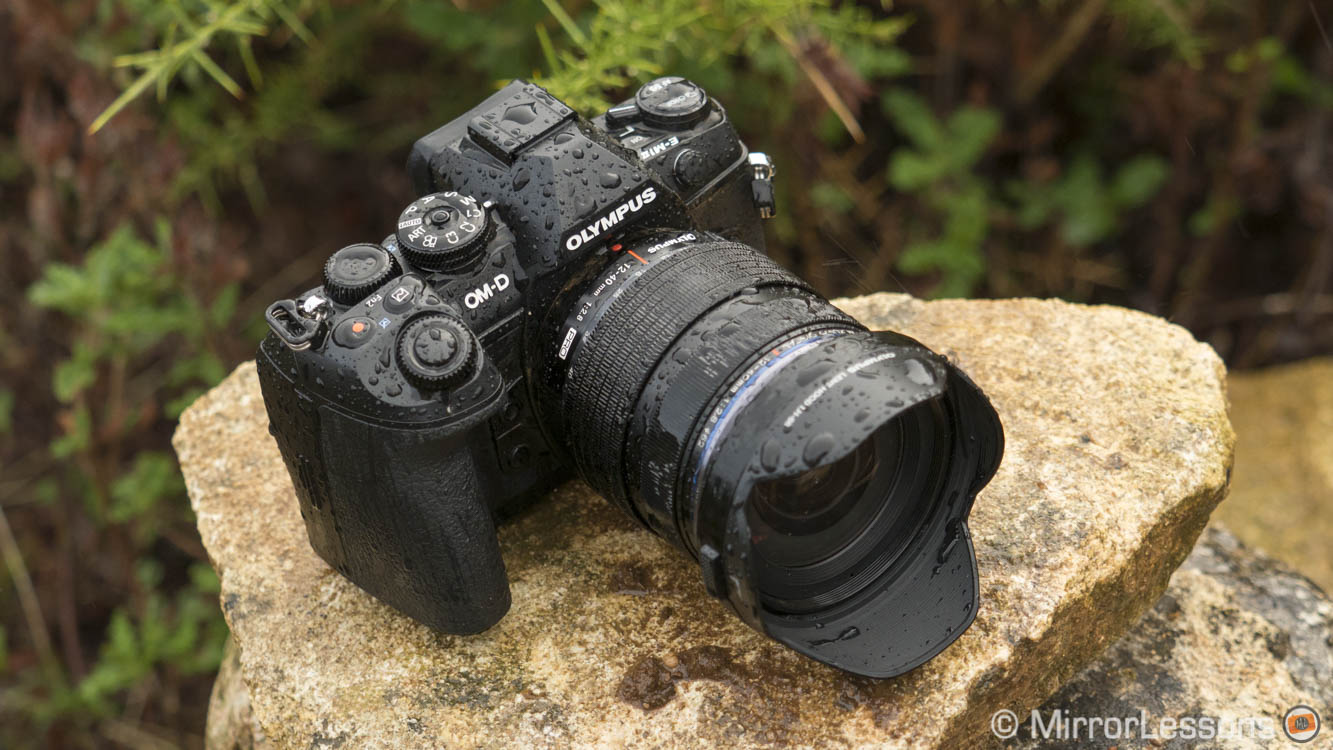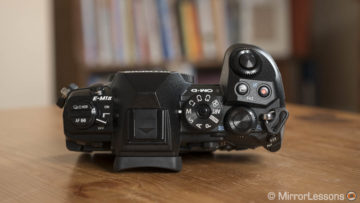We first saw it five months ago at Photokina, had the chance to put it through its paces during a dedicated press event in Spain, pitched it against other mirrorless cameras on our comparison website (including its predecessor, the E-M1) and now we’ve finally published our complete review of the Olympus OM-D E-M1 II.
As with all our latest reviews, this full review has been produced in video format. However, we’ve also included a summary of our findings and sample images in this article.
Ethics statement: We were provided with a sample of the OM-D E-M1 mark II by Olympus Europe to test. We were not asked to write anything about the camera in exchange for the opportunity and were not provided with any other compensation of any kind. Within the article, there are affiliate links. If you buy something after clicking the link, we will receive a small commission. Don’t worry – prices remain the same for you. To know more about our ethics, you can visit our full disclosure page. Thank you!
Main Specs
- Sensor: 20 MP 4/3 Live Mos
- Lens system: Micro Four Thirds
- Weatherproof: Complete (splash, dust and freeze proof -10°C)
- Internal Stabilisation: Yes
- Autofocus: Hybrid with 121 cross-type points
- Continuous shooting: 15fps (AF-S), 10fps (AF-C), 60fps (AF-S) and 18fps (C-AF) with electronic shutter
- ISO Sensitivity: 200 – 25600 ISO (Pull 64)
- Shutter Speeds: 1/8000 to 60 seconds, 1/16000s with electronic shutter
- Viewfinder: 2,360K dots, approx. 100% FOV coverage and 1.48x (0.74x) magnification, 120fps
- Rear monitor: Multi-Angle 3″ LCD monitor (1,040K dots)
- Movie recording: 4K up to 30fps, C4K at 24fps, Full HD up to 60fps
- Built-in Flash: No but external FL-LM3 supplied
- Extra Features: WiFi, Timelapse, HDR, Multiple exposure, Live Time, Live Composite, Focus Stacking, Keystone compensation, High Res Shot, Pro Capture
- Dimensions: 134.1 x 90.9 x 68.9mm
- Weight: 574g (including battery and memory card)
- Firmware version when tested: 1.0
Video Review
Table of Contents:
- 1:09 – What I like the most: Image Stabilisation (for stills and video)
- 4:13 – What I like: Image Quality
- 8:31 – What I like: Design and Customisation
- 10:38 – What I like: Speed (Continuous shooting, buffer and Pro Capture)
- 13:14 – What I like: 4K video
- 16:24 – What I like: Battery life
- 17:41 – Good but can be perfected: Autofocus for stills
- 21:37 – What I don’t like: C-AF for video and other nitpickings
- 23:27 – Conclusion
Summary of our findings
- Image stabilisation: with a successful keeper rate of 3 to 5s with 5-axis sensor shift and 5 to 10s with the 12-100mm Pro (Sync IS), the E-M1 II is the most impressive camera I’ve ever tested when it comes to image stabilisation. Except for a few specific situations (astrophotography, long exposures with ND filters, etc.), you will never feel the need to pack a tripod ever again. In video mode, it is possible to perform slow panning and record footage that looks like it was taken on a proper video head. You can still encounter some distortion in the corners when walking but it is less severe and invasive in comparison to previous OM-D. The truth is that I would happily buy this camera just for this feature.
- Image quality: it’s a good improvement concerning dynamic range and highlight recovery in comparison to the original E-M1. You can expose more on the right and preserve better details in the shadows, knowing that the highlights will hold well. High ISO performance hasn’t changed that much but you get excellent results up to 3200. 6400 is still decent and 12800 is usable if you need these values. The JPG engine and colours are excellent. The camera becomes really versatile when you add all the extra features such as Live Composite and Live Time, Focus Bracketing and Stacking and the High Res Shot. Despite having being improved, I still find the latter unreliable for landscapes unless everything is perfectly still.
- Design and customisation: the design of the camera is great and I love the new grip, which is very comfortable with larger lenses like the 300mm Pro. The E-M1 II is robust, weather-sealed and has a very advanced level of customisation. It can be overwhelming at first but there is very little you cannot do.
- Speed: the camera is fast in every way, from the simple operation of the camera to the stunning continuous shooting speeds. The improvements also extend to the release lag time, EVF lag time, blackouts and buffer capabilities. At 15fps or 10fps, the speed rarely decreases with a UHS-II card. The Pro Capture mode can be an excellent ally for action and you’ll rarely end up with rolling shutter issues. Perhaps the only small downside is that Pro Capture doesn’t work with Panasonic or Four Thirds lenses.
- Video capabilities: the first Olympus 4K camera doesn’t disappoint. The 4K footage is crisp and the Picture Mode (Flat mode) gives you better dynamic range. The Cinema 4K mode is limited to 24fps but gives you even sharper results than regular 4K (Ultra HD). Rolling shutter is very much contained and as said earlier, the stabilisation system is very effective. High ISO are good up to 1600 or 3200 depending on your tolerance for noise. At 6400 ISO, it is clearly invasive. There is a Noise Filter option just like for stills which reduces colour noise but also softens the details. The 1080p footage lacks some sharpness and can display aliasing. The 2x digital teleconverter mode can be interesting to use in 4K but in Full HD the quality decreases more significantly.
- Battery life: simply the best I’ve experienced on a mirrorless camera. Shoot normally and it will last you more than a day. Stress the camera with continuous shooting and 4K video and you can keep going for more than a reasonable amount of time. For example, 30 minutes of 4K recording drained the battery by just 18%. On another occasion, I managed to bring home more than 1000 images and still have a 40% charge left. The battery charges in 2 hours which is another nice aspect.
- Autofocus: for stills, there are many improvements over the original E-M1. The new camera locks faster and is more reactive with difficult subjects. S-AF is blazingly fast, and face and eye detection are more reliable. My only complaint for now is a lack of consistency in C-AF: it can lack precision, resulting in soft images, while on other occasions it can misfocus completely. It is the best Micro Four Thirds camera you can find as of now but not the best mirrorless camera around. When recording video, continuous can be much slower when tracking fast subjects. However things could improve with firmware updates. Olympus already stated in a recent DPReview interview that they plan to improve the AF in the future via software updates.
- Additional nitpicking: There aren’t a lot of things I don’t like about the camera. The menu system has been reorganised and while I appreciate having a separate section for video, I still find some of the settings difficult to understand at first glance and other settings are hidden deeply inside the menu. The shutter release button is very sensitive, so you might end up taking some pictures accidentally. Considering the stunning speeds and data processing this camera is capable of, I would have expected to see a 120fps mode in Full HD. Finally, the 4K time-lapse movie option is still only 5fps.
Our verdict
My overall opinion of the Olympus OM-D E-M1 II is very positive. To me, this camera nails it in almost every department.
I was very pleased with the image quality and 4K video, I simply love the stabilisation system, the camera feels wonderful in the hand and when you consider just how many excellent Micro Four Thirds lenses you can pair with the camera, you realise just how high-class and portable this system is.
The autofocus has lots of potential and I got very good results on many occasions. However it can also lack some precision and consistency, which is why it is not the aspect that impressed me the most. Perhaps Olympus will be able to improve a few things via firmware update.
If I consider mirrorless cameras in general, I find the autofocus performance of the E-M1 II to be slightly below that of the Fujifilm X-T2 and the Sony a6300. But on the flip side, there are so many other things this camera does equally well, if not better.
It’s only real Achilles heel is the price, which was significantly higher than expected upon its announcement. However, we must also bear in mind that not a lot of cameras pack so many functionalities into one single package. (And since the new Panasonic GH5 has been given a very similar price, Olympus users shouldn’t feel so alone anymore!)
Sample images
- Note: a full res ISO comparison with the E-M1 is available here.








Click to open the full res version


Click to open the full res version






